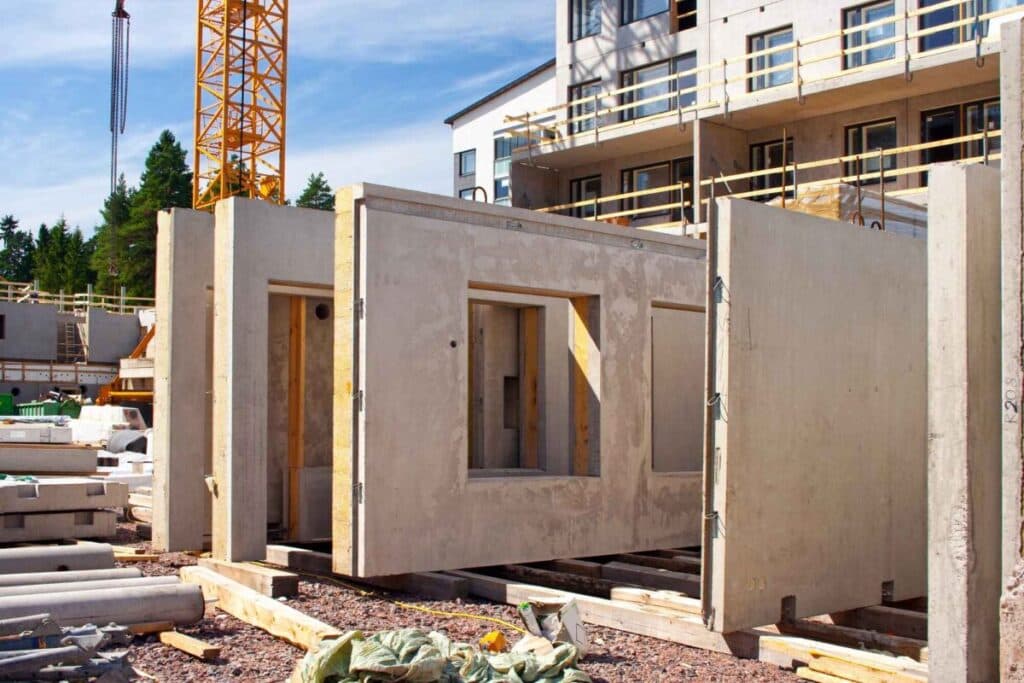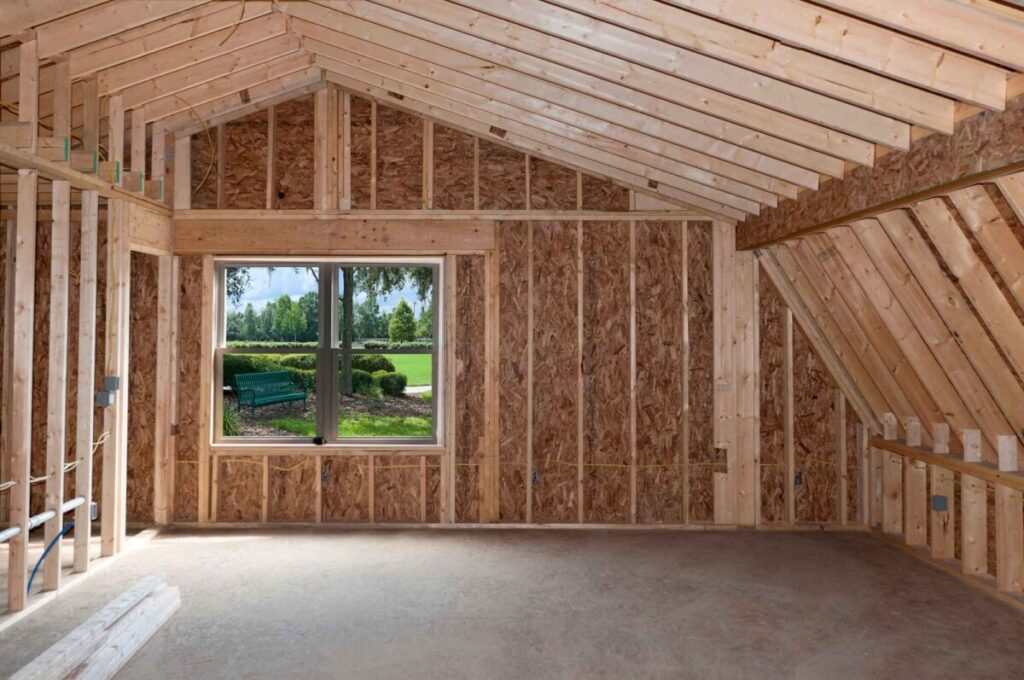It would be easy to quote the price per square foot for concrete home construction vis-à-vis the price per square foot for the same size wooden house. But direct comparisons like that fail to capture the complexity and nuance of these choices.
That is because the building and maintenance costs are woven together with the sustainability, durability and longevity of the materials involved in the construction process.
The factors being weighed here are certainly complex. In this article, we will explore these respective approaches, with special attention to cost, sustainability, maintenance, durability and time to build.
The Costs
The U.S. Department of Housing has suggested that concrete houses add around 4 percent to the price tag of a new home. Consequently, they calculate that for the construction of a 2,500-square-foot house, the price difference between concrete and wood would be around $7,000.
The price difference can be separated into 6 different construction cost aspects:
- Cost of building material
- Cost of labour to build
- Time to build
- Maintenance costs
- Durability
- Insulation
Oregon State University conducted one of the most comprehensive cost comparisons of concrete vs wood construction. The study compared the costs of concrete and cross-laminated timber. The results showed that the timber option was 6.43 percent more expensive. However, it must be acknowledged that change orders, or revisions of the scope of work made mid-construction, made a significant contribution to the construction costs in this case.
As concrete construction requires a greater range of skills and machinery, their cost tends to be higher for domestic projects.
In addition, the construction time for timber frame construction tends to be shorter than that of concrete, creating a more favourable cost price using timber. However, concrete building methods such as ‘tilt-up’ walls have reduced construction times.
The initial costs are only one part of the equation; other factors that need to be considered are:
- Concrete is more durable than timber
- Maintenance costs of concrete structures are lower
- Concrete can withstand severe climatic conditions
- Concrete buildings are fire-resistant and do not rot or suffer insect infestation
- Concrete homes can absorb heat, thereby improving the energy efficiency of the building in terms of winter warmth
- Concrete has superior sound absorption properties
Concrete is generally used for larger, multi-storey buildings, while single-storey homes tend to be built using timber frame construction. In some Canadian provinces, like British Columbia, building codes prescribe that buildings that are above six storeys must be built using concrete.
Durability
In general, concrete buildings are considered to be two to three times more durable than buildings constructed with wood. However, it isn’t easy to establish a direct comparison as the integrity of the specific materials and type of construction techniques also significantly determine the house’s longevity.
Maintenance costs for a concrete house are mainly limited to preventing moisture absorption. In addition, minor cracks may occasionally occur that require attention. As well, the problems of insect infestation and rot found in houses of wood construction are absent in concrete structures.
Initial Costs
As a heavier product, concrete raises the building cost due to transport charges. It also lengthens the construction process. The comparative per-square-foot costs also depend upon the fluctuation in the respective material prices; for example, the recent spike in lumber prices during the pandemic reduced the variance between building costs using the two materials.
While lumber prices have retreated to previous levels, the cost of concrete has also moderately decreased.
The superior ability of concrete buildings to withstand severe weather has become more significant as climate change plays havoc with weather conditions. This and the reduced fire risk have tended to reduce the insurance costs for concrete houses compared to houses constructed with wood, providing some incentive for choosing concrete as the preferred building material from an insurance perspective.
While traditional concrete building methods suffered from sluggish progress, modern methods like ‘tilt-up’ concrete building can outpace wood frame construction in terms of building speed and material costs.
Thermal Insulation and Energy Efficiency
Concrete’s thermal mass promotes a more uniform temperature range as concrete slowly releases the stored warmth as the temperature decreases, reducing the home’s temperature control cost.
Modern concrete building methods incorporate a thermal insulation layer sandwiched between the interior and exterior concrete layers, making the house extremely energy efficient. The introduction of Insulating Concrete Forms (ICF) has created a concrete-based product with excellent thermal insulation properties.
Proponents of concrete structures highlight the material’s ‘passive survivability’, it’s ability to withstand extreme weather events, and point out how the reduction in energy demands improves occupant comfort.
The costs associated with insulation and air sealing have an impact both on the price of the house and its operating costs. The ability to seal openings efficiently gives concrete an advantage over timber in regards to air sealing.
However, when in comes to insulation, wood wins out with its flexible options for adding insulation. Since concrete walls are rigid, adding insulation is both labour intensive and more costly. Wood is also a much better insulator than concrete. The R-value of plywood is 15 times that of poured concrete (plywood = 1.24 vs concrete = 0.08).
Sustainability
At first glance, timber frame construction should easily be the most sustainable. After all, we are dealing with a natural, renewable product. However, there are several parts to the comparative puzzle.
The primary sustainability factors focus on embodied carbon, durability/lifespan, local availability, presence of a certification (e.g. FSC-certified wood), recycled material content, recyclability, toxicity and building geometry. Additionally, the project’s specific requirements will tend to prescribe the preferred material and a careful assessment of the individual advantages of timber and concrete.
The comparative values of timber and concrete construction and the respective embodied carbon emissions cover a broad spectrum of activities over the building’s lifecycle from resource extraction to disposal.
Concrete is a non-renewable resource and its production is highly energy intensive. Wood, on the other hand, is a renewable resource and the carbon footprint of its production process is much lower. At the end of its life, concrete can be recycled, however, it often is not due to the lack of available recycling facilities in certain locations. Being a natural material, wood can biodegrade over time if it’s not reused or recycled.
There are factors on both sides of the coin that can make both of them more or less sustainable. New types of low-carbon concrete mixes promise a much lower carbon footprint. Forestry practices can determine the sustainability of wood – if the timber comes from responsibly managed forests it’s a lot different than if it comes from old growth forests.
In addition, wider issues such as biodiversity, health and well-being of the building occupants during construction and occupation, and the broader social value are all important considerations that contribute to the final selection decision.

